5 Exterior Paint Mistakes to Avoid If You Don't Want Your House to Become the Worst-Looking on the Street
Sun exposure, poor planning, and even the temperature you paint in can all affect the way paint settles on your home's exterior, and not in a good way
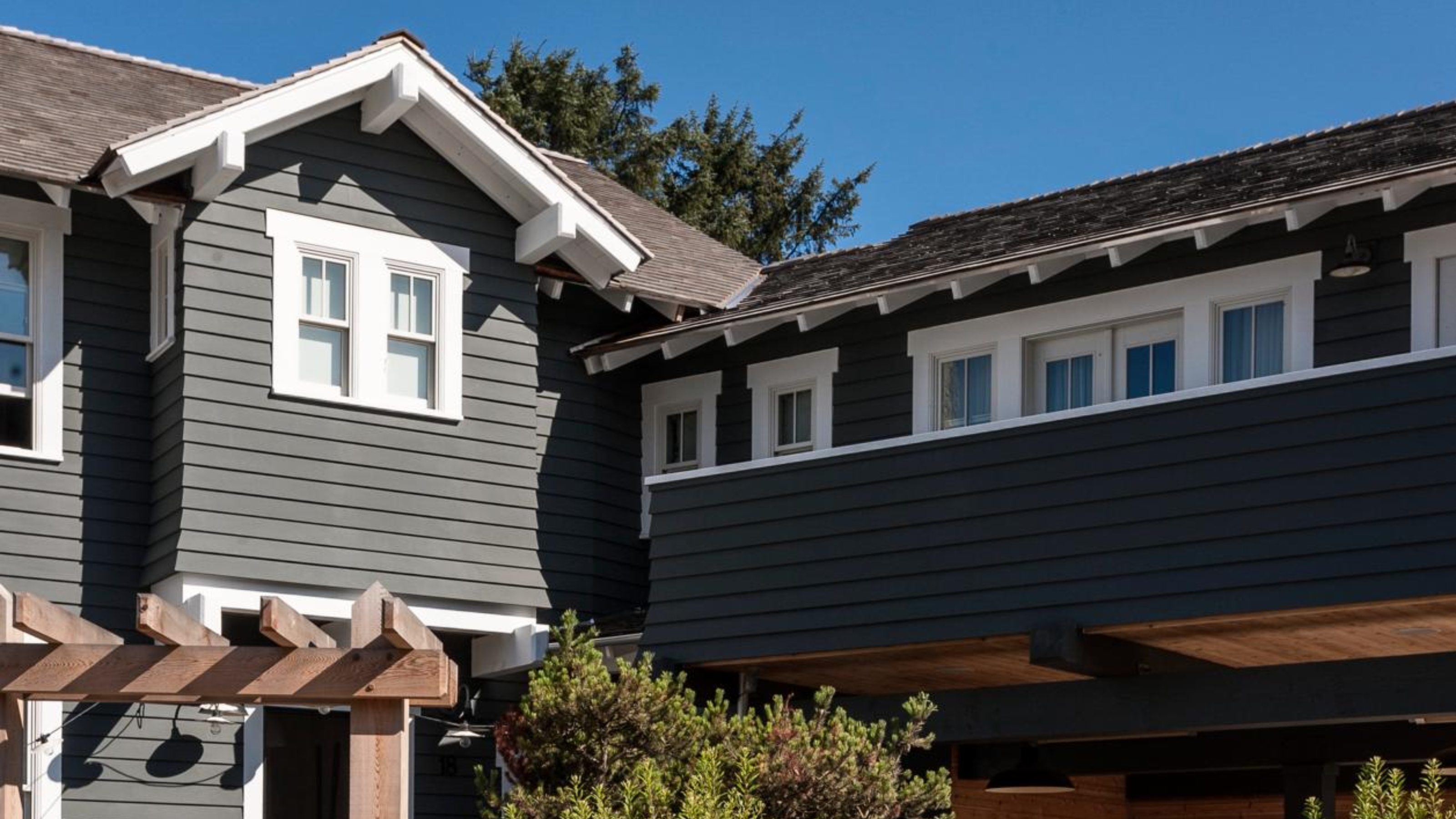

Just like inside, one of the easiest ways to update your home's curb appeal is by giving your exterior a fresh coat of paint. But unlike inside, an exterior paint refresh takes a little more planning and preparation than you might think, and there are countless exterior paint mistakes that are only too easy to make.
"That's because the exterior of a house is exposed to the elements all year round, often experiencing extremes of temperatures and conditions, from hot summer sunshine through the winter cold and rain," explains Helen Shaw, a color expert at Benjamin Moore.
So, if your home's exterior isn't exactly giving the first impression you'd like it to, maybe it's because you skipped swatching or haven't considered the effects of sunlight exposure. But fear not, to help maximize the beauty of exterior paint trends, experts share the biggest learnings, lessons, and warnings to heed before you even think about picking up a paintbrush.
1. Not Swatch Testing Your Paint
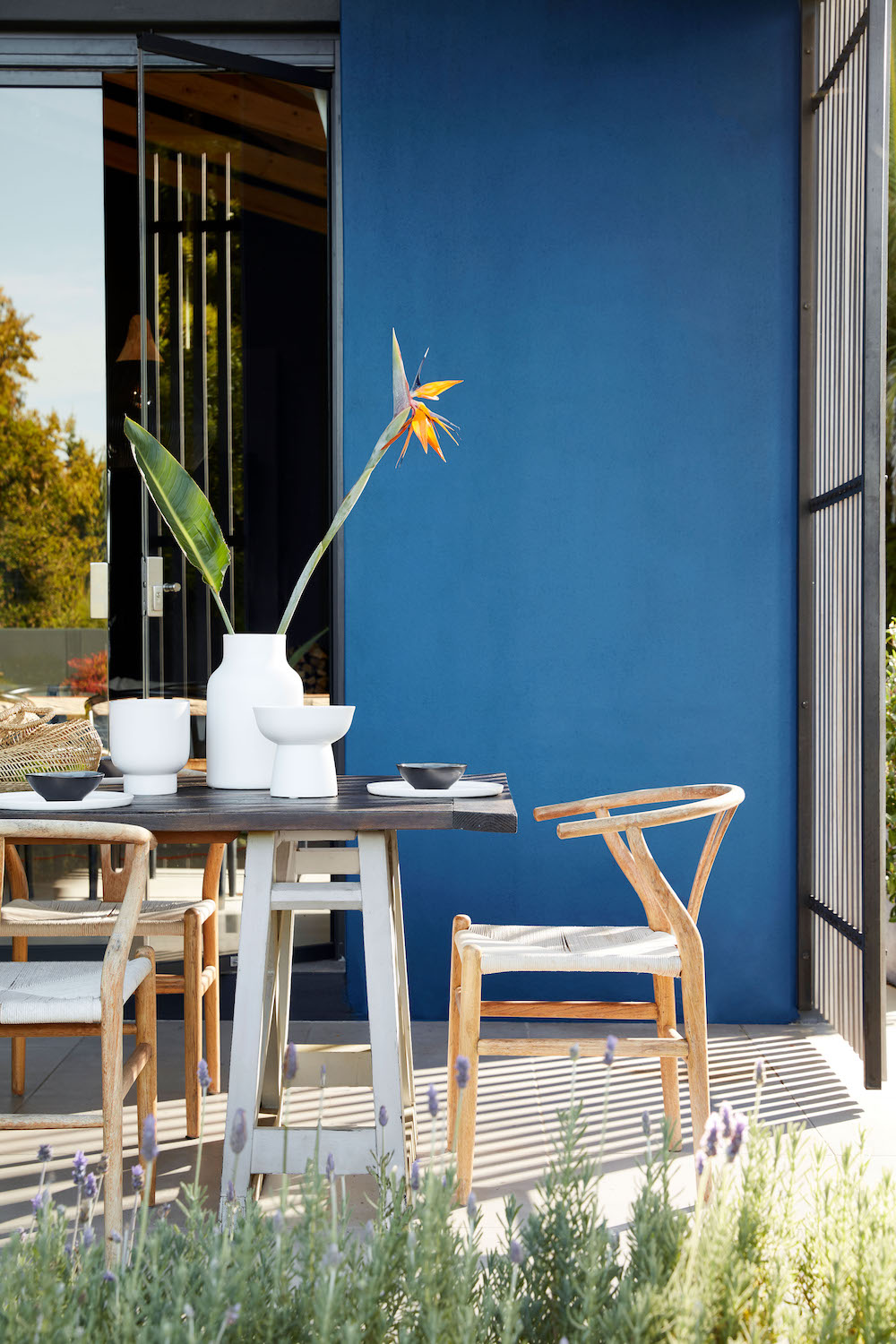
Cold colors can make a stunning addition to an outdoor space, but they may not read the same as it does on the paint chip. Testing it before you buy or paint is essential.
A well-done paint job starts at the very beginning. "One of the biggest mistakes that people make is not testing paint colors on different sides of your home," Kristin Harrison of Virginia-based Georgia & Hunt Design House explains.
The way a color looks on an interior wall is extremely different from how it will look on an exterior wall. Not only that, but "I always put swatches on different sides of the house so the client can see it in all sorts of light (and shade)," says Kristin.
If your house sits in direct sunlight, it's worth reading up on how lighting affects paint colors — it can look completely different from what's in the can, or even at different times of the day. That's why it's important to swatch test on different sides to ensure you are happy with the color from every angle and in every light.
2. Having a Poor Surface Prep
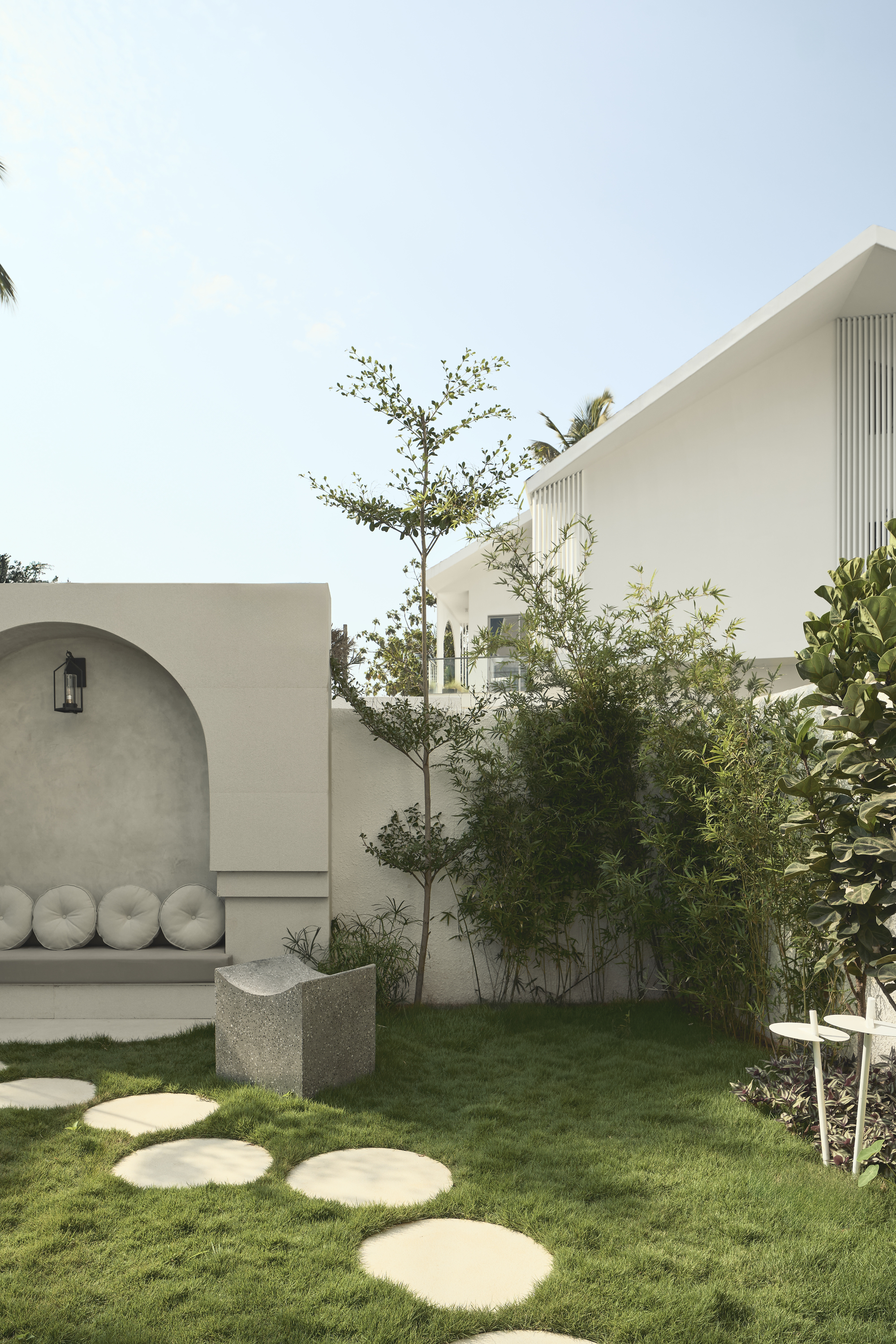
The exterior wall in this garden feels crisp, refined, and even includes a textural painting technique.
The importance of planning leads us to the second biggest exterior paint mistake: poor surface prep. It's safe to say that paint preparation doesn't end with swatching — how you prime your walls goes a long way in terms of color and paint longevity.
The Livingetc newsletters are your inside source for what’s shaping interiors now - and what’s next. Discover trend forecasts, smart style ideas, and curated shopping inspiration that brings design to life. Subscribe today and stay ahead of the curve.
"Preparation is key. Start by thoroughly cleaning and drying the surfaces you are attending to," says Benjamin Moore's Helen Shaw . "Then, check for areas that show signs of damage." If you notice any cracking in your wall, don't cut corners by painting over it.
"It is important to remove any flakes from the surface before repainting," Helen adds. "If cracking does not go down to the substrate, remove the loose or flaking paint with a scraper or wire brush, sand the area to feather the edges, remembering to wipe down any dust after you have finished, then prime any bare spots, and repaint the surface."
This step is crucial in keeping the cost of painting the exterior of a house to a minimum — no one wants to have to start over based on a mistake made at the beginning.

Helen Shaw is a color expert and the international marketing director at paint brand Benjamin Moore. Helen and her husband Craig are the founders of Shaw Paints, acquired by Benjamin Moore in 2020.
3. Using the Same Color for the Body and Trim
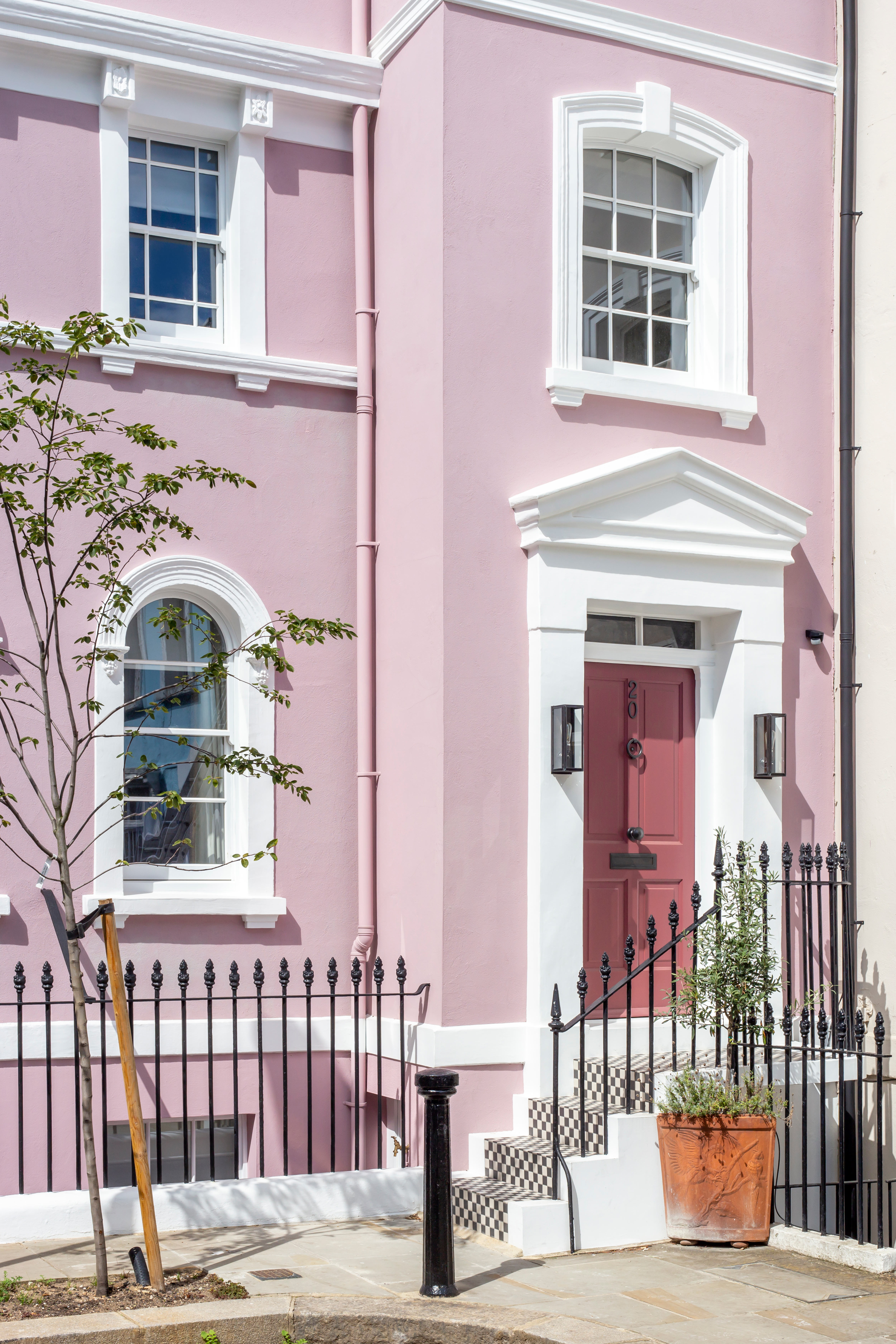
"It is such a simple adjustment, but it is one of those design moves that separates a basic paint job from a truly considered exterior," Christopher says.
Interior designer Christopher Boutlier of Christopher Boutlier Interiors says the biggest exterior painting mistake he sees is "homeowners choosing the same color for both the body of the house and the trim."
Sure, color-drenching can look clean and modern inside the home, but on the exterior, the same wall and trim color often flattens the architecture. "All those thoughtful details like window casings, crown profiles, and eaves get lost in a single tone," says Christopher. "The eye has nowhere to rest, and the result can feel one-note rather than layered and intentional."
Instead, try treating the exterior trim color as a frame. Even if you are committed to a tonal palette, going a shade or two lighter on the trim provides that subtle shift that instantly defines the edges, brings out shadow lines, and creates depth without ever looking high contrast or fussy.
4. Not Considering Direct Sunlight Exposure
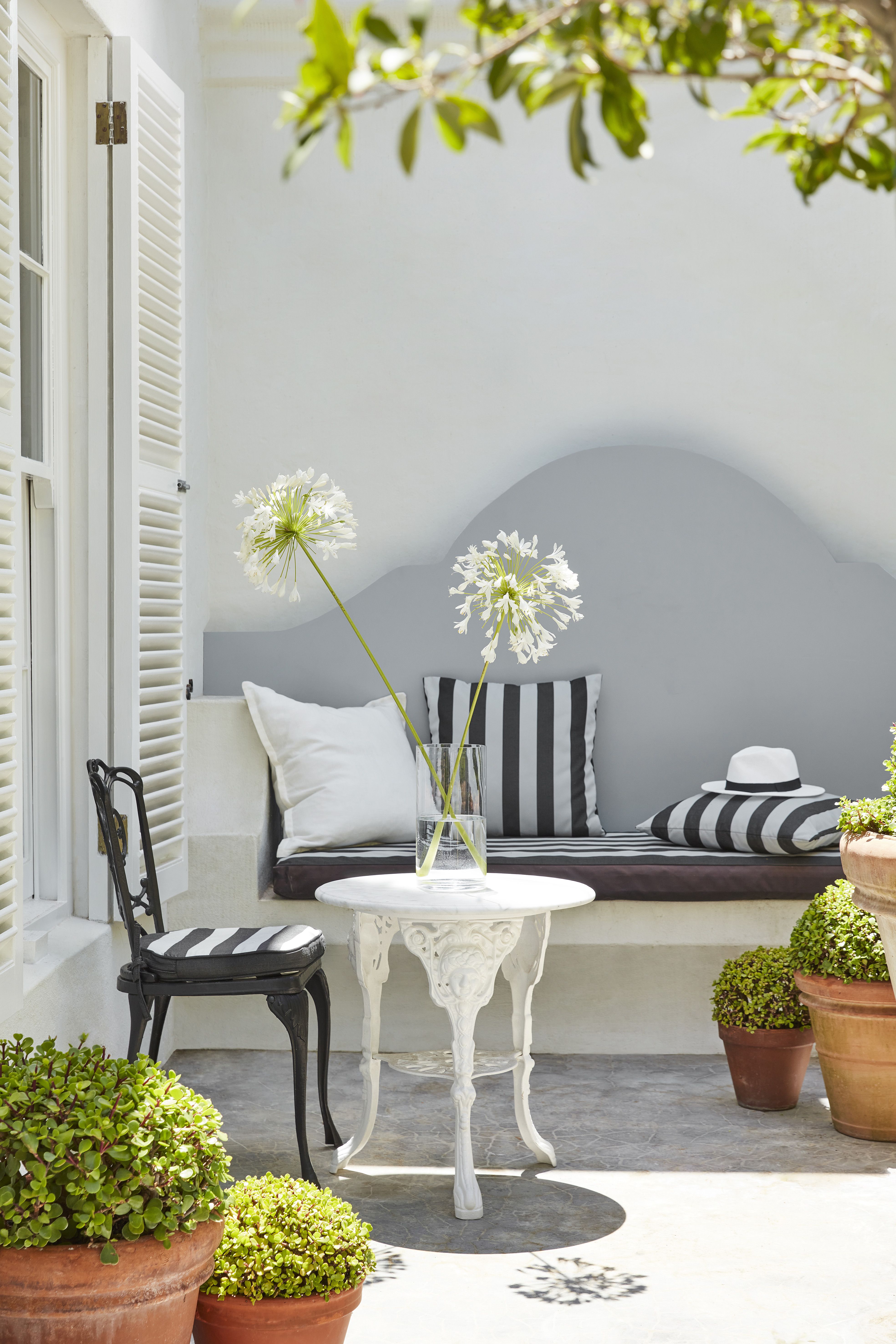
Lighter paint colors are often a low-risk choice for sun-exposed gardens.
Having a garden or outdoor living space that gets direct sunlight is a blessing, but it will also affect your exterior paint choice. Whites may become too blinding in direct sun, and natural olive greens may read as brighter or flatter than intended.
However, apart from just color change, "Direct UV ray sunlight is a common cause for exterior paint to fade," says BEHR’s senior product manager, Ed Edrosa. "That’s because direct rays can break down chemical bonds and fade the color in an object."
Faded exterior paint colors can make a once-stylish shade of charcoal gray feel washed out and drab, increasing how often you need to repaint your house's exterior.
While this is unavoidable for some homes, if you live in a sun-prone spot, many brands offer exterior paint for doors and windows that help reflect heat and withstand harsh temperatures.

Ed has over 30 years of experience in the paint and coatings industry with a proven track record of launching successful, innovative products that are focused on the needs of painting professionals. He has been an adjunct instructor for the Southern California Painting & Decorating Contractors of America Unilateral Apprenticeship Program (SCPDCA UAP) since 2005 and is recognized by his peers as an expert in the coatings field.
5. Painting In the Wrong Temperature
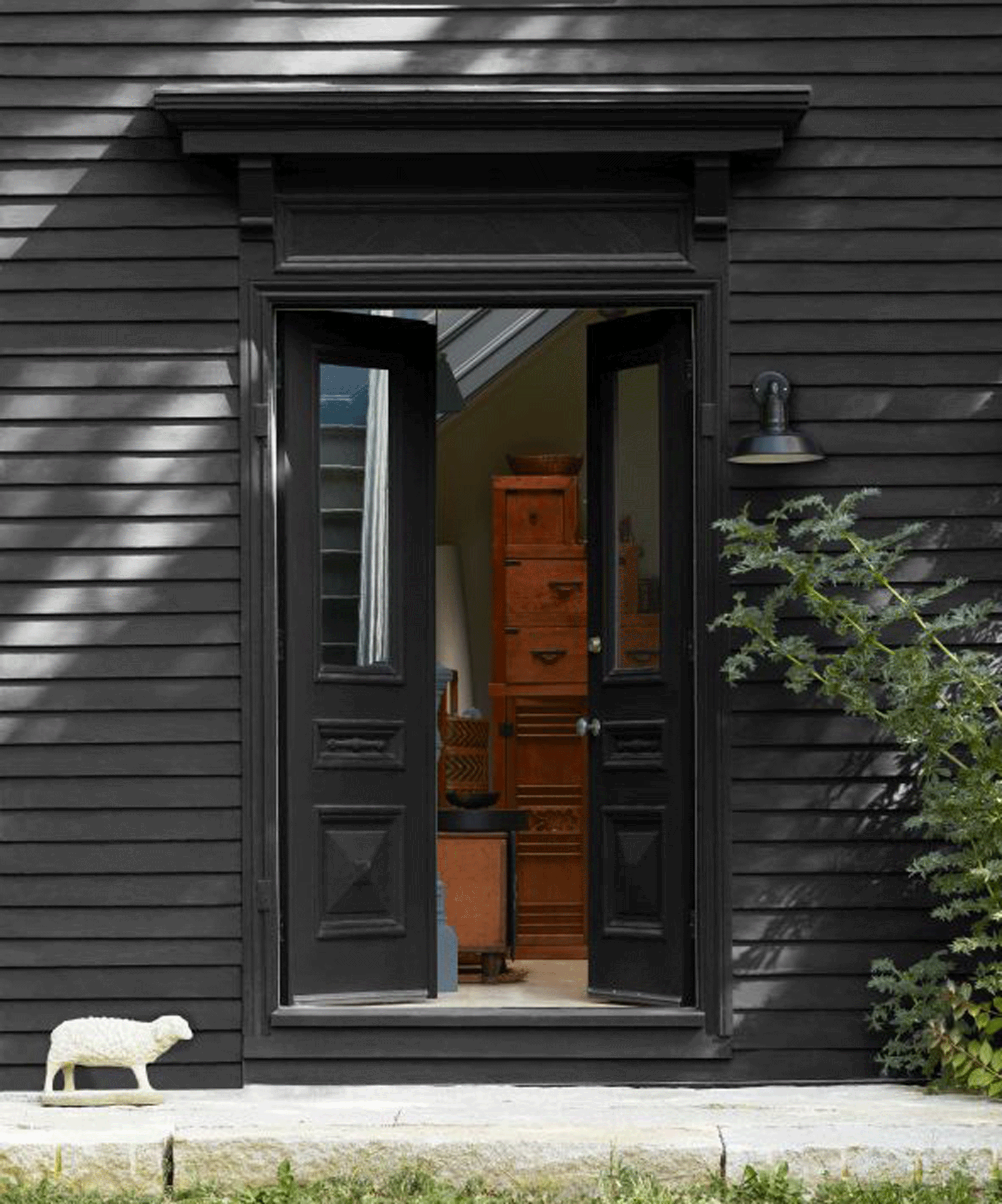
Try to plan your exterior painting renovation during a time of mild weather.
This exterior paint mistake is less obvious than the others, but equally as important. According to Nick Cryer, founder of high-end residential property renovation company Berkley Place, painting in the wrong temperature can actually affect the quality of your paint job.
"When the paint is applied in the wrong weather, so when it’s too hot or too cold or too damp, that can cause problems," he says.
This mostly boils down to the way temperature affects how long paint takes to dry. For instance, in lower temperatures, your paint will often take longer to dry completely. A long drying time means that your paint won’t settle properly, which can lead to your paint 'bubbling', or even cause dirt and debris to get caught in the wet paint.
As we know, you can't control the weather. So, the quick fix is to study up on the correct temperatures to paint outside in, and plan accordingly.
Mistakes can quickly turn painting your exterior into an expensive undertaking. But perhaps nothing is a bigger mistake than choosing the wrong color, so it's worth doing the research to find the outdated exterior paint colors to avoid in 2025.

Olivia Wolfe is a Design Writer at Livingetc. She recently graduated from University of the Arts London, London College of Communication with a Masters Degree in Arts and Lifestyle Journalism. In her previous experience, she has worked with multiple multimedia publications in both London and the United States covering a range of culture-related topics, with an expertise in art and design. At the weekends she can be found working on her oil paintings, reading, or antique shopping at one of London's many vintage markets.